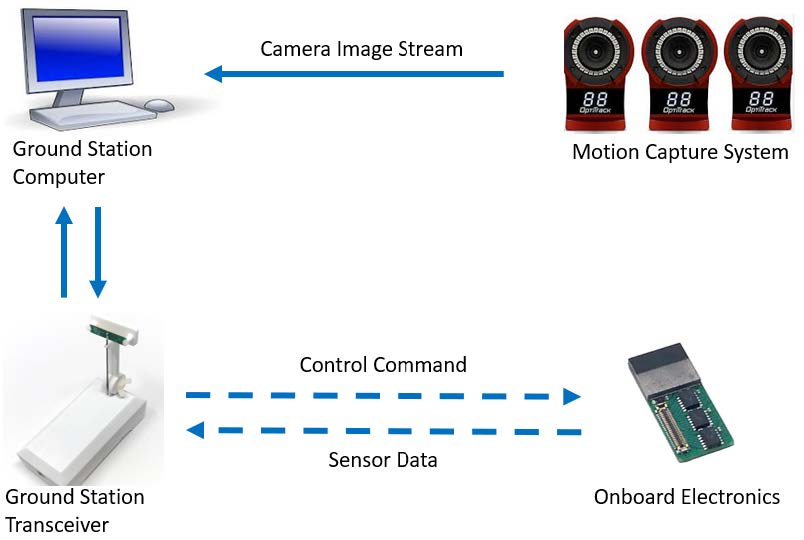This lightweight flight control system for miniature aerial robots includes a 0.5-gram core electronics board that integrates all functions and a low latency off-board control scheme. This arrangement frees up space for batteries, actuators, supporting structures, and critical elements for mission tasks.
Georgia Tech’s system consists of a ground station, one or more aerial robots, and an indoor motion capture system. The ground station is built around a generic computer that interfaces the localization device, hosts the flight control software, processes computationally intensive tasks, and communicates wirelessly with the aerial robots. A single ground station can support multiple robots simultaneously, enabling cooperative behaviors in multi-robot swarm applications.
The system features a unique low-latency off-board control scheme that is specifically designed for indoor aerial robots, permitting implementation of real-time flight controllers on the ground station rather than onboard the robots, which significantly reduces power consumption. The system has the lowest latency and the highest update rate among indoor flying robots.
This technology has been integrated with two others—an autonomous indoor robotic blimp (7136) and a motion capture marker (8528)—into a full-scale prototype. (The three inventions can also be used independently.) Functionality tests of the integrated system demonstrated successful performance and reliability for nearly one year. Videos of these tests are available on the research team’s YouTube channel.
- Lightweight: Features a core electronics board that weighs less than half a gram
- Flexible: Contains a core electronics board that can be conveniently reprogrammed for expanded functionality
- Compact: Offers a small form factor with an area of about 2 square centimeters
- Convenient: Enables off-board computation for real-time robot tasks such as attitude stabilization
- Modular design: Simplifies assembly, maintenance, and future improvements
- Miniature aerial robots
- Small-size ground robots
- Lightweight outdoor robots
- Remote-controlled toys
Payload limitations of miniature aerial robots are closely related to flight endurance. For example, a larger battery will increase flight time but requires sacrificing payload capacity. In addition, many functions of aerial robots (e.g., computer vision) demand intensive computational effort, which consumes additional payload and energy if implemented onboard. Yet if realized offboard, communication between the robot and a ground station must meet low latency demands as well as high update rate.
Georgia Tech’s innovation address all these issues with a unique system that is lightweight and offers low energy consumption and high output power density.

Major components and workflow of the flight control system. Solid arrows denote wire connection and dashed arrows represent wireless communication.gtr
